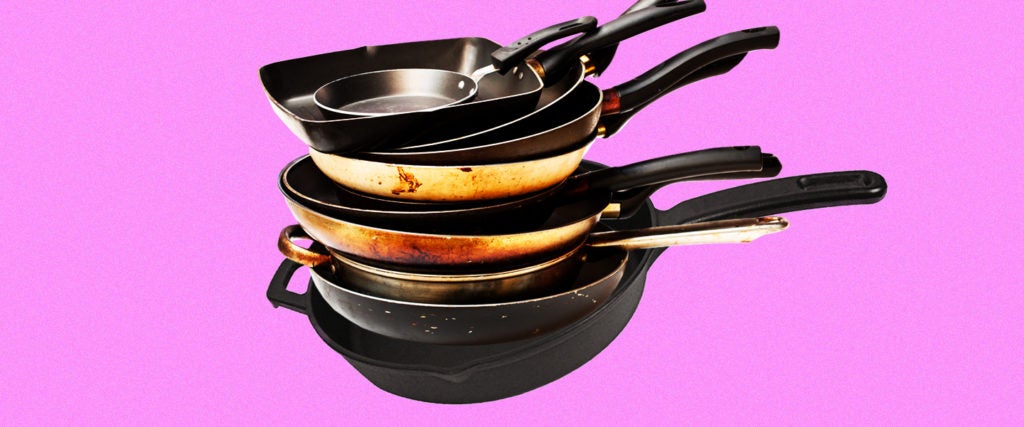The need for financial literacy classes in public school seems almost indisputable, but I’d argue that we need to be taught even more basic life skills. Namely, let’s bring back home economics to help answer questions like: What type of goddamn pan am I supposed to purchase? My high school physics teacher told me Teflon poisons people, and that’s essentially all I know about the devices through which I cook my food.
I can waltz into any Target, and my pan material decisions are astounding. Ceramic, aluminum, steel, iron and the mysterious “nonstick” Teflon are among the most common. Each one is trying to tell me that it’s the best, but really, what is the freaking truth? Is not getting breast cancer from my skillet too much to ask?
For most people, the guiding principle determining which material is best for cooking will be which type of cooking they’re hoping to do. Something like a pasta pot will likely experience less friction than a skillet used for frying eggs. This is important, because we often end up consuming whatever material a pan is made of when it becomes scratched. Consuming a little metal isn’t actually a big deal in most cases, but a lot of those old school “nonstick” pans are a different story. Fortunately, we’ve made some innovations in recent years that make modern nonstick pans a bit safer. Nevertheless, you might still want to carefully consider your materials.
Basically, the “healthiest” pan is whichever variety is safest to eat. By that measure, cast iron is a top choice. You need iron in your diet, anyway! Some people need to watch their iron intake and have to avoid cast iron for that reason, while cast iron cookware is often recommended for people who need more iron in their diet. For the average person, though, cast iron is still a solid pick. Plus, it lasts freaking forever, and people have been cooking with cast iron pans basically since the pan was invented.
That said, cast iron can be expensive to purchase and complicated to clean, so it might not suit everyone’s needs. After cast iron, Epicurious ranks ceramic as their top choice of non-toxic, nonstick pans. However, ceramic pans can wear down easily, and may contain coatings that are themselves a bit more toxic. They list this $50 pan as their top choice.
Because of wear and tear, the “safest” pan is ultimately also whichever one you take the best care of. Even creepy nonstick pans are safe, so long as they don’t become scratched or damaged. It’s best to wash all of your pans by hand instead of in the dishwasher, avoid allowing them to overheat and definitely don’t use metal utensils against them. If you opt for a cheap mystery-metal pan, you might end up needing to replace it faster than a more expensive option.
If the fact that shitty, toxic pans are lined up on the shelves alongside the safer, higher-quality versions, without any indication of their actual qualities, isn’t an indictment of late-capitalism, I don’t know what is. We don’t need this much choice! I just wanna fry a damn egg!

